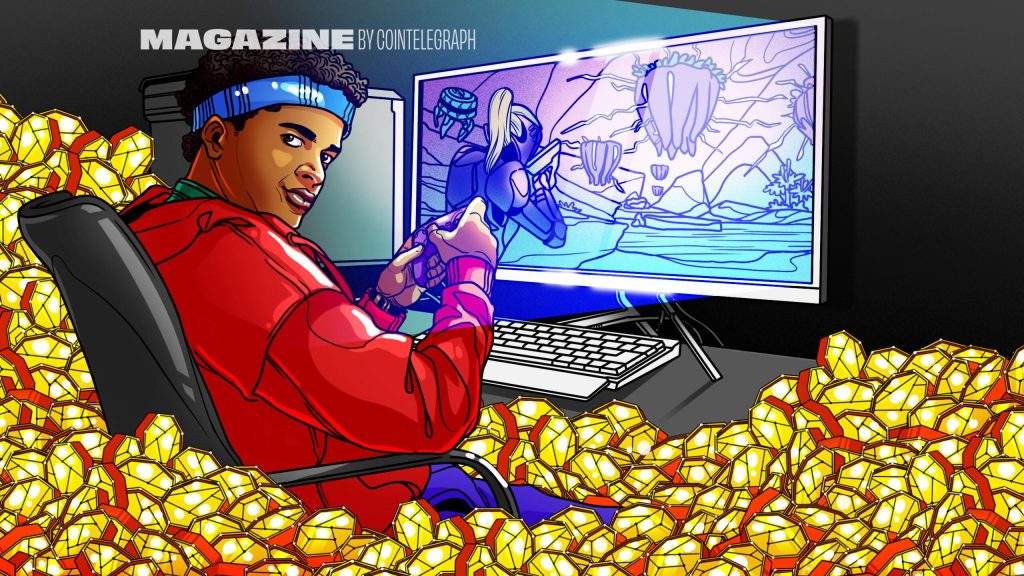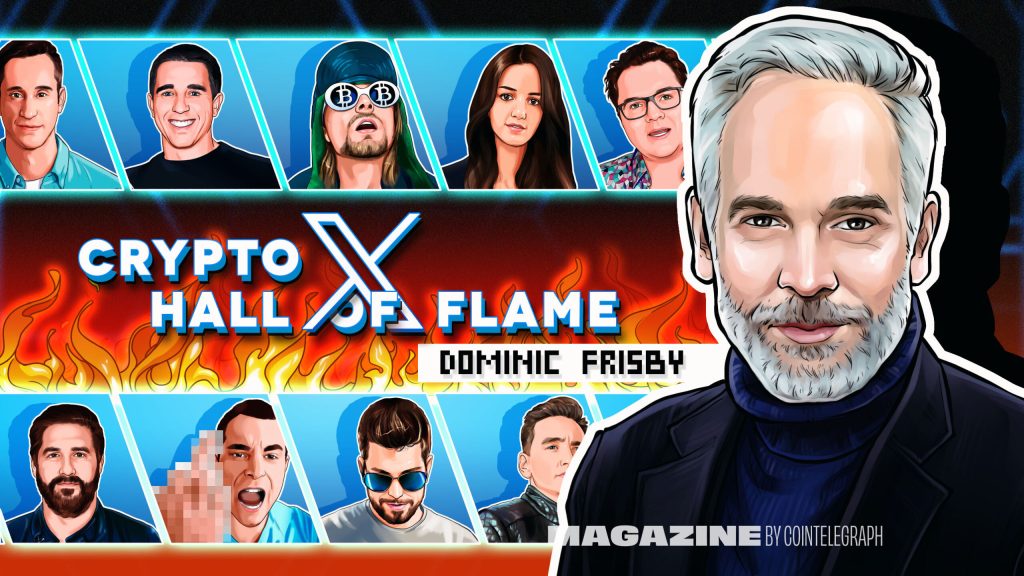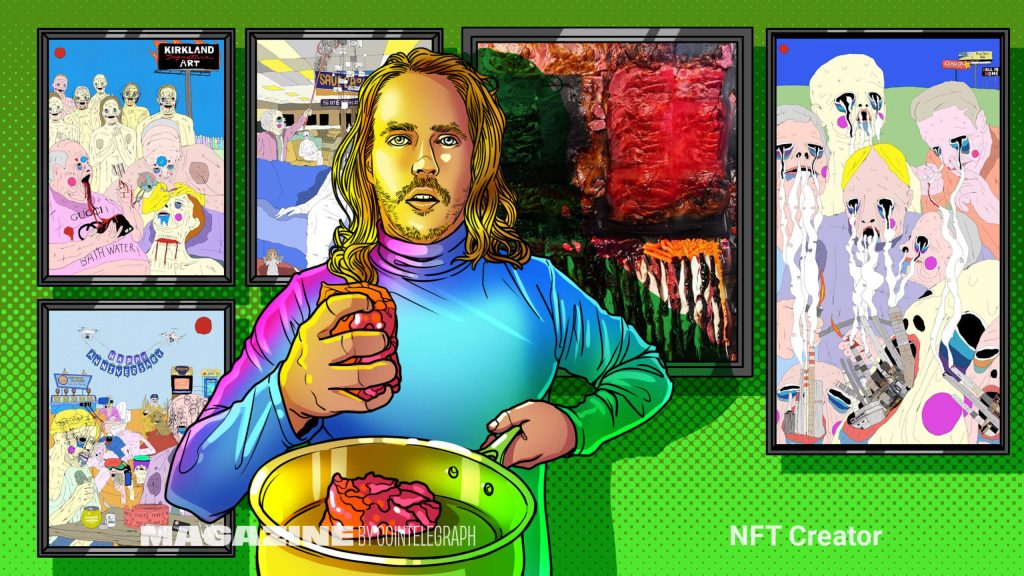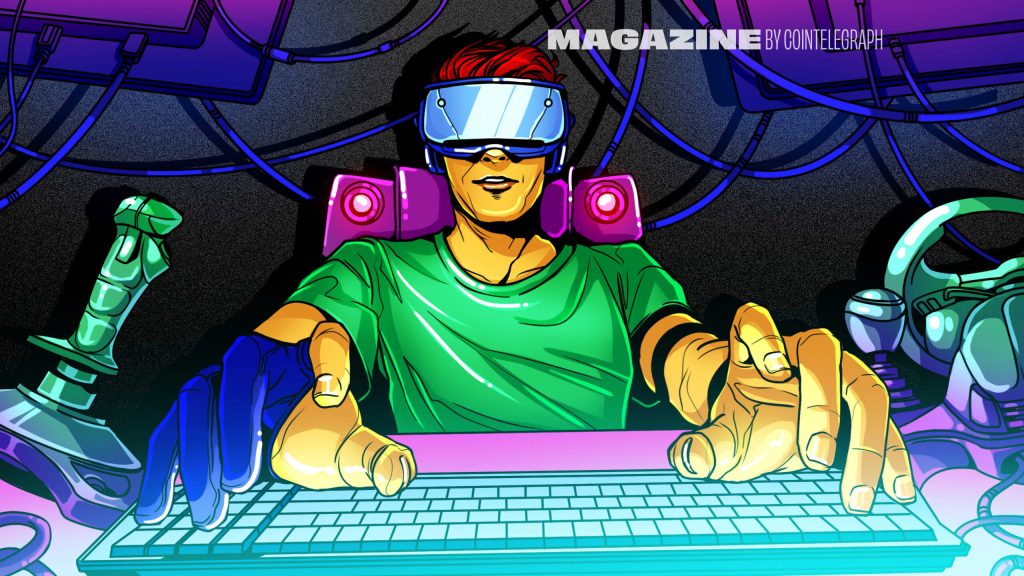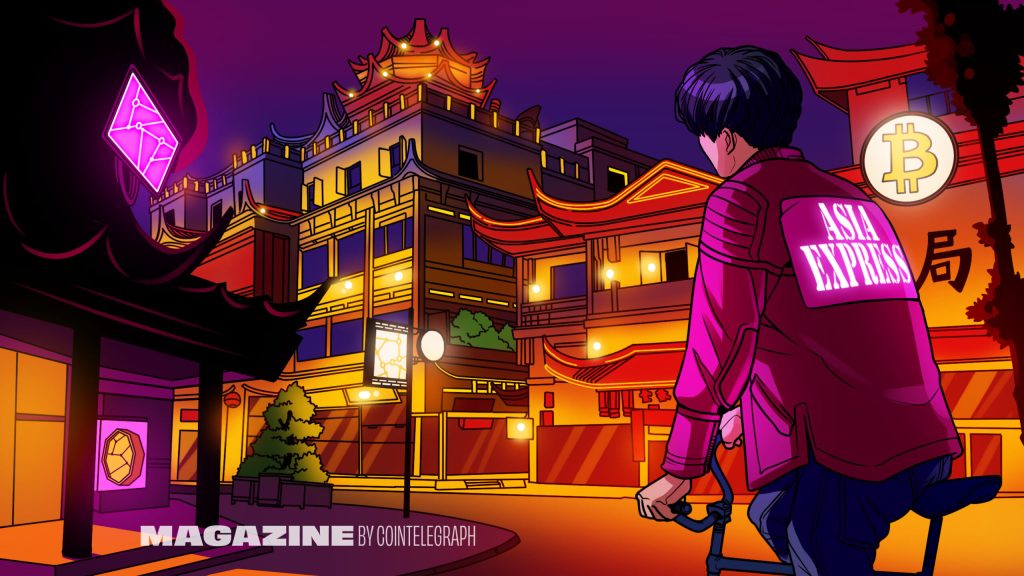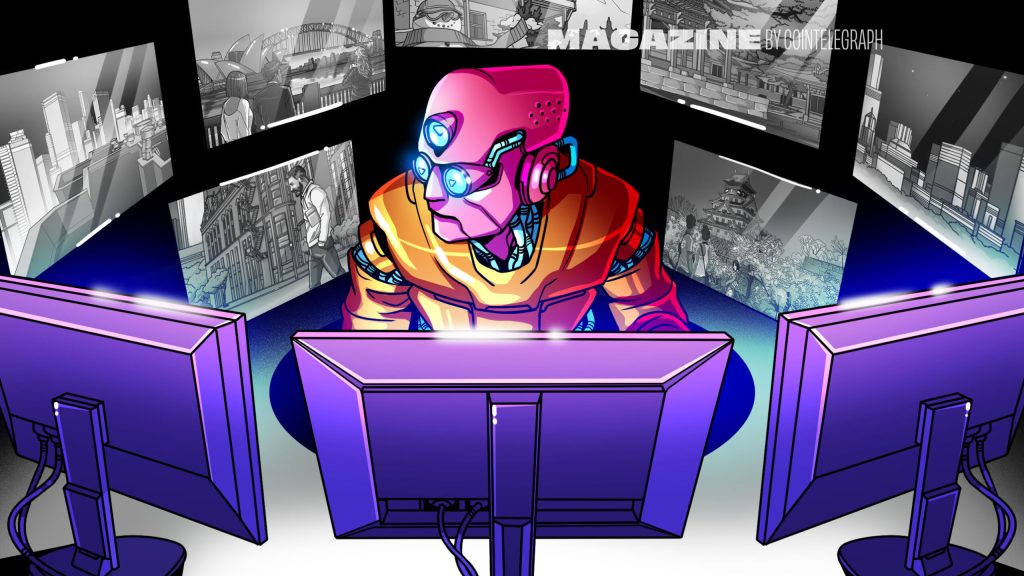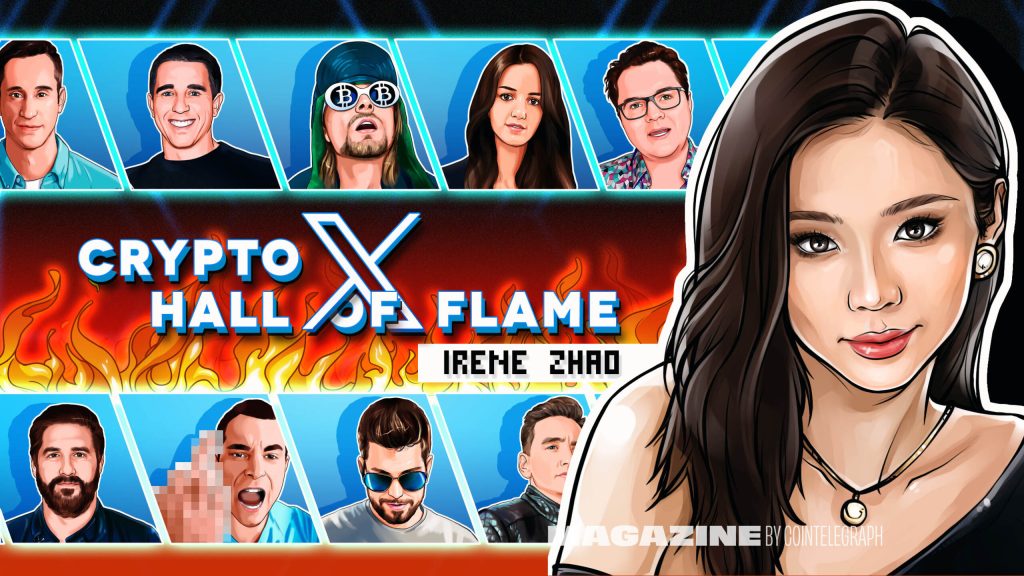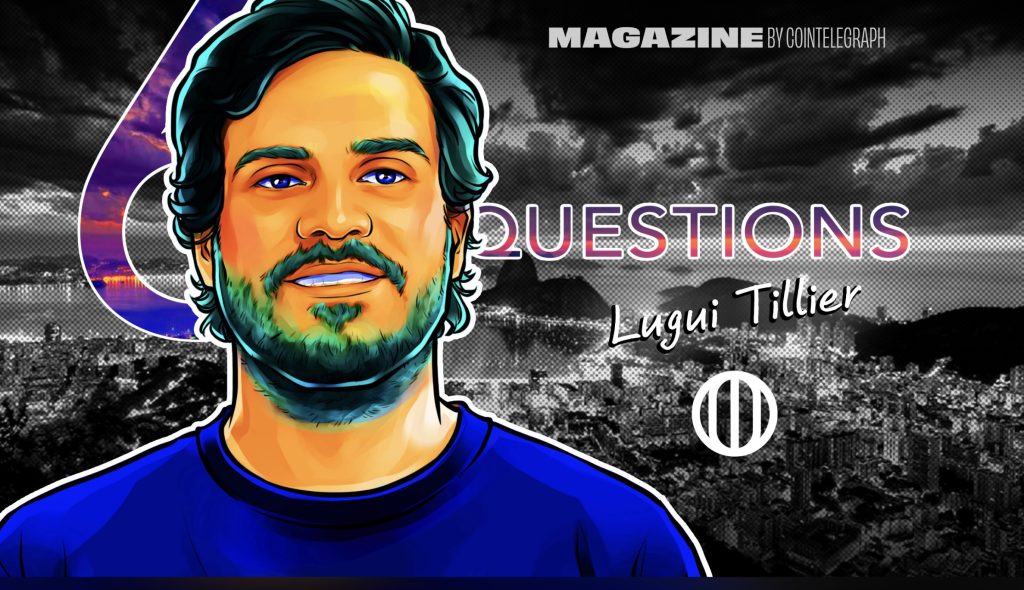65% plunge in Web3 Games in ’23 but ‘real hits’ coming, $26M NFL Rivals NFT: Web3 Gamer


Can Shrapnel save Web3 gaming after a horror 2023? Why Disney’s NFT platform is “irrelevant” and the $26M NFT in free mobile game NFL RIvals.
As the year winds down, every gaming company and its dog are dropping year-in-review reports.
A recent report from blockchain gaming accelerator Game7 suggests that many game developers had an enforced nap instead of pumping out new games.
This year, just 223 Web3 games were launched, a 65% drop from the 640 games started in 2022 and even more distant from the 811 games that got going in 2021.


So whats the deal with the sudden nosedive in output?
Well, the optimistic answer is Rome wasnt built in a day.
It seems to be what Immutable co-founder and president Robbie Ferguson believes that many great Web3 gaming hits are on the way … but patience is required.
Speaking to Magazine, Ferguson says that there has been a significant surge of money into Web3 games lately, and developers are focusing on crafting standout hits:
The last year has been really interesting, Web3 gaming has had such an influx of investment, its just the time-lag of the production of games until we start seeing hits … roughly $15 billion U.S. has been invested in Web3 gaming over the past 3 years.
Immutable now has more than 200 games on the platform, and games such as Shardbound Blade Of God, Arkbound and Galactico Manager 24 have 8+ figures in funding collectively, and have shipped multiple 10 million+ player hits,” according to Immutable spokesperson Alex Revutsky.
Similarly, John Stefanidis, CEO of Balthazar Gaming DAO, mentions the amount of cash flowing in the Web3 gaming scene, even though new money from retail is yet to flow back into the overall crypto markets.
“The appetite has significantly increased. Projects are minting out and raising money again. I think the belief in Web3 has continued to grow, even in the bear market, Stefanidis says.
But in 2024, the real hits wont just be tossing money around to keep players hooked, at least according to Gabby Dizon, co-founder of Yield Guild Games.
In a recent interview with Cointelegraph, Dizon declared that the most successful Web3 games in 2024 will pivot from play-to-earn (P2E) to instead focus on being entirely free-to-play to attract players.
Keep an eye on Shrapnel, the AAA first-person extraction shooter blockchain game, to see whether it will emerge as a hit or a flop.
The game has been getting a ton of hype in the industry.
Its set on Earth in the year 2038, where the objective is to gather valuable in-game assets and safely extract them while facing off against enemies and rival players.
The coming months will also see the debut of the long-awaited Illuvium games, along with other big titles.
Getting ready to extract. pic.twitter.com/kq6B07Ub97
SHRAPNEL (@playSHRAPNEL) September 13, 2023
However, Stefanidis told Magazine that the games that will score big might just be the ones doing the classic, promise less, but deliver way more:
“I think the challenges that games are having right now are trying to deliver on the huge number of promises that they’ve made, and they’re struggling to acquire users off the back of that when there are other games coming out that are promising much less.”
Ferguson predicts that the first hit blockchain game will catalyze an entirely new narrative as developers will be able to see the playbook used to make successful games.
By the end of this year, there should no longer be any roadblocks for a game thats successful enough from being able to succeed.
Blowfish Studios announce early access to Phantom Galaxies
The team behind the new sci-fi action RPG game Phantom Galaxies described the gaming space as “challenging and unpredictable” when it announced early access to the game.
Are the developers fessing up to a little bit of market jitters as they roll out the new game?
Thank you, Rangers
As our Early Access journey unfolds, we want to extend a massive thank you to our team of talented Rangers. Their tireless efforts behind the scenes continue to be the backbone of our success
The gaming space can be challenging and unpredictable, but https://t.co/F8QMTvKRYw
Phantom Galaxies (@the_phantom_g) November 17, 2023
Its probably unnecessary as the title has garnered considerable attention online, already clocking up over 100,000 followers on the X platform, aka Twitter.
Published by Blowfish Studios, a subsidiary of Web3 giant Animoca Brands, Phantom Galaxies is available for free on both Steam and the Epic Games Store.
Set in the aftermath of an interstellar war, the game unfolds as the Commonwealth and the Union come together to establish the Ranger Squadron an outfit of skilled mecha pilots who guard human colonies on the outer edges of space.
Players join the squadron as an ensign a junior ranked officer controlling a transforming Starlighter, fighting against pirate factions and aliens.
According to an official blog post, an official governance token called Astrafer can be used to splash on credits, Ores, and U-Cubes for upgrading the Starfighter.
There are three ranger tracks available in the game. The first two, Standard and Advanced, hook every player up with rewards after hitting certain levels. But heres the bummer Astrafer isnt part of the rewards for these two tracks, unfortunately.
The priciest option for players is the Elite Track. Right now, this track is the only way to earn Astrafer in the game, but dont worry, they swear it wont be like this forever.
The Elite Track is the only way to receive ASTRAFER in-game currently, but this will change in future.
However, if users arent into making moolah, they can hop on the Standard Track for free.
Disneys Web3 platform irrelevant
Disney has decided to dip its toes in the nonfungible token space after tossing its metaverse plans out the window earlier this year along with 50 jobs.
In a partnership with blockchain and metaverse firm Dapper Labs, it has created an NFT platform that will offer iconic cartoon characters from the past century on the marketplace, dubbed Disney Pinnacle.
Be the first to chase, collect and trade digital pins featuring characters you love. Only on Disney Pinnacle.
Join the waitlist at https://t.co/VCeadWRHTU! pic.twitter.com/GQa084CkW4
DisneyPinnacle (@DisneyPinnacle) November 14, 2023
The platform will also include icons from Pixar as well as heroes and villains from the Star Wars galaxy, styled as collectible and tradable digital pins.
But … is this buzz around mega-billion dollar companies jumping into the Web3 scene still a thing?
Ilja Moisejevs, co-founder of Solana NFT marketplace Tensor, believes it really isnt worth the fuss:
Not sure if it’s an unpopular opinion but Disney, Nike, Sbux, the next Web2 brand getting into Web3 … is irrelevant. It’s like worrying if Walmart will start using the web in 1999. Sure they will, eventually, who cares 99% of web’s value capture was done by web-native startups.
Not sure if unpopular opinion – but Disney, Nike, Sbux, the next web2 brand getting into web3…
…is irrelevant.
It’s like worrying if walmart will start using the web in 1999.
Sure they will, eventually, who cares – 99% of web’s value capture was done by web-native
ilmoi | Tensor (@_ilmoi) November 19, 2023
Hot Take: NFL Rivals
NFL Rivals is a mobile blockchain game published by Mythical Games in collaboration with the National Football League (NFL).
The gaming crew only recently bid farewell to Ethereum blockchain and jumped ship to Polkadot. They pointed the finger at Ethereums sluggish transaction speeds and wallet-draining costs.
Before you roll your eyes at an NFL title, nope, you dont need to be a sports guru for this one.
Honestly, its not really a game thatll make die-hard sports fans excited. Its straightforward, and thats the beauty of it.
I got sucked into the gameplay, and I swear Ive never seen an NFL match.


If youre on the hunt for a fresh game to kill time during a delayed flight or keep you entertained when your dates fashionably late, this is the one.
Better yet, it doesnt cost you a dime to play on your iPhone or Android.
The tutorial was surprisingly efficient, not like those never-ending ones. It covered throws and kicks and got right into the gameplay without any fuss.
Once youre in the game, you wear the team manager hat. You assemble your players every game, level up, recruit better players (and ditch the underperformers).


Once you hit level four in the game, you unlock the option to buy, sell, and trade individual NFL players as NTFs on the Mythical online marketplace.


I took a quick peek at the marketplace, and the big shot collectible is Jaquan Brisker, selling for a massive 100 million MYTH.
Thats around $26 million USD, in case you were wondering.
If youre not ready to splash that type of cash, no worries you can grab yourself a bargain with Justin Houston for just 1.5 MYTH, about $0.39 USD.
What I do like about NFL Rivals is that it seamlessly fits into the iPhone screen, unlike some soccer and tennis games that Ive tried where your thumbs end up covering half the action. Not cool.
Controls? Pretty smooth. Even if youve got chubby fingers, this game wont have you pulling your hair out.
More from the Web3 gaming space
Popular game studio Avalon has teased its new User-Generated Content (UGC) MMORPG in a 90-second trailer.
Immutable teams up with Japanese game developer Black Tower Studios to release Web3 game Arkbound.
Gaming giant Ubisoft has announced plans to launch an Ethereum nonfungible token (NFT) for its upcoming game Champion Tactics.
PancakeSwap expands its gaming offerings with the launch of PancakeSwap Gaming Marketplace.












